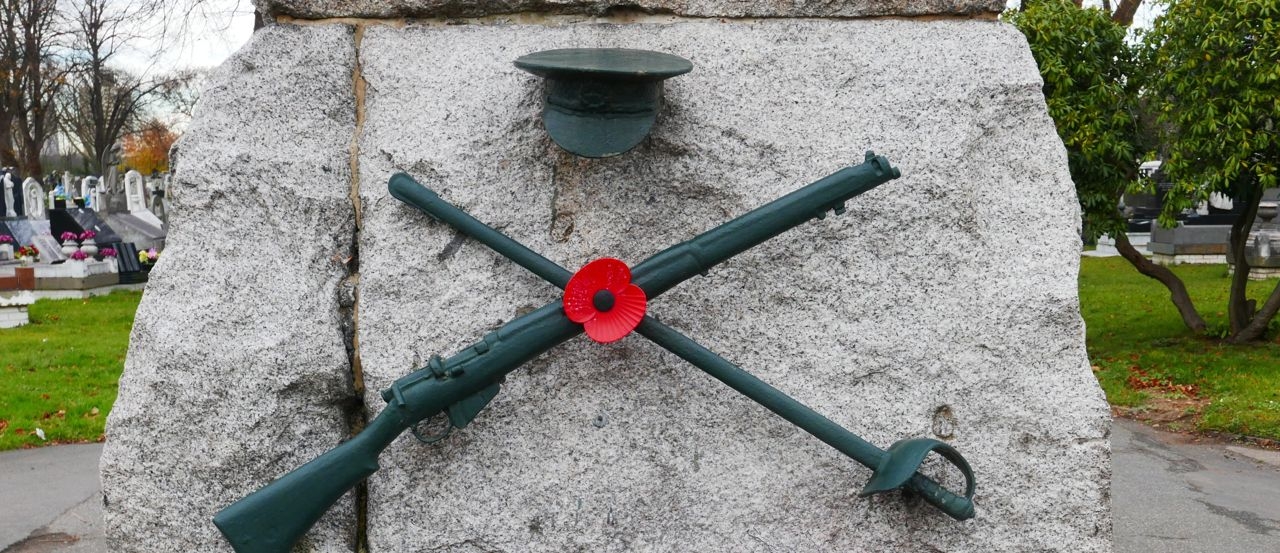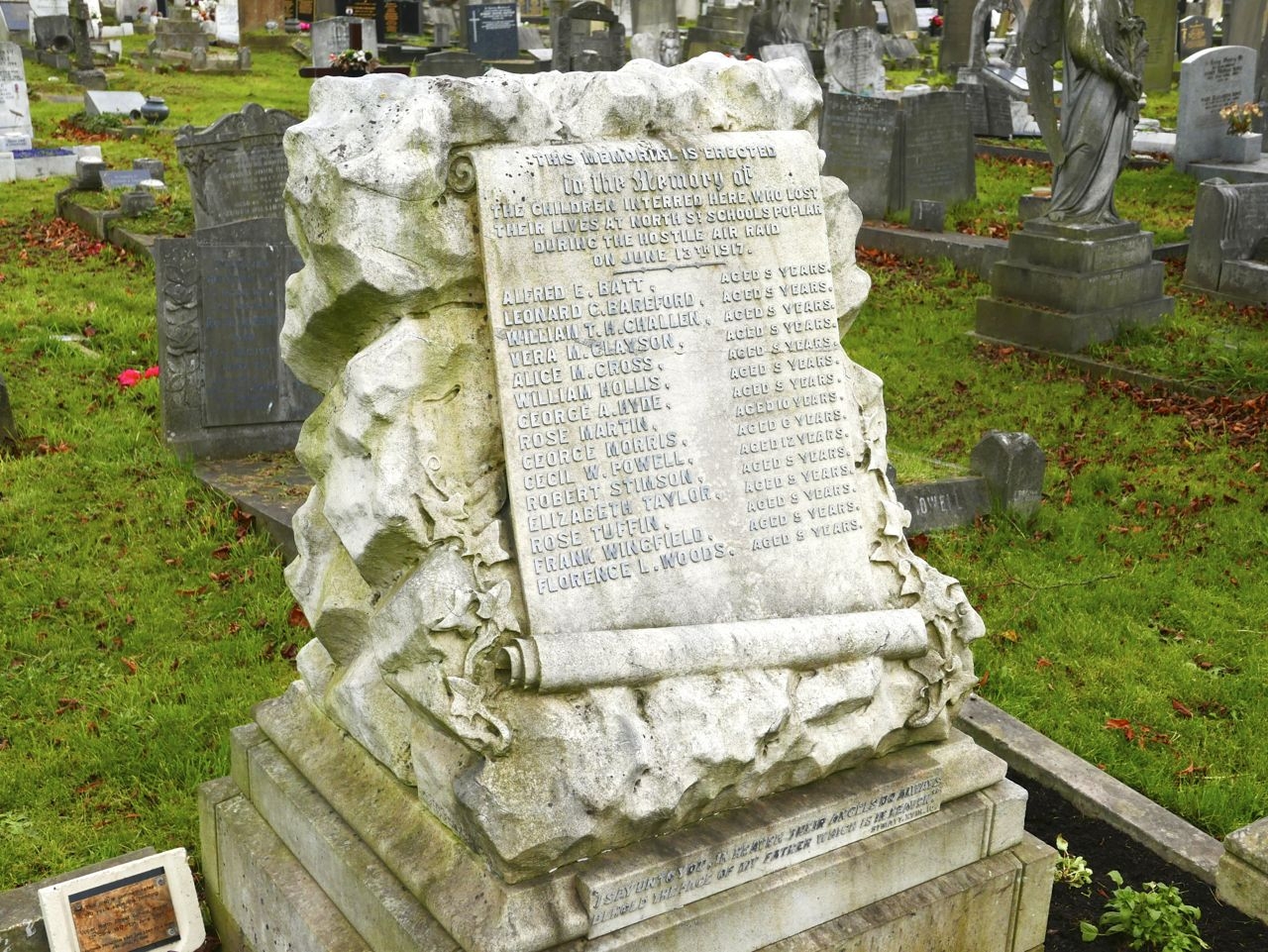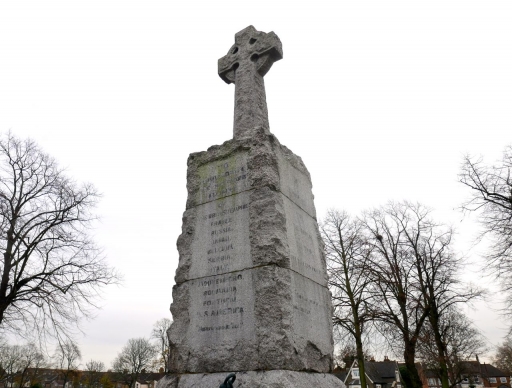Eight memorials dedicated to the dead of the Great War in 1917 have been newly ‘listed’ for heritage protection in their centenary year.
They include a monument marking the mass grave of schoolchildren killed in a German air raid, a calvary cross inaugurated on Christmas Day 1917, and an unusual memorial to the sacrifices of Britain and all the Allied nations.
An obelisk on the site of a hospital for Indian troops, dating from 1915, has also had its listing updated to reflect its full historic importance.
The UK Government has protected the sites on the advice of conservationists, Historic England.
“These memorials were an important indicator of society’s attitude as the war progressed and as the loss of life increased to unprecedented levels,” explains Duncan Wilson, Historic England’s Chief Executive.
“They were not just a focal point for people’s grief but also seen as a symbol to those still fighting.”
Two of the memorials are in the East London Cemetery in Plaistow, a mile or two south from the present-day Queen Elizabeth Olympic Park.
 There’s no mistaking the monument to the dead of the Great War close to the cemetery entrance, with its emblems of a crossed rifle and sword, surmounted by a soldier’s cap (there’s an anchor on the reverse).
There’s no mistaking the monument to the dead of the Great War close to the cemetery entrance, with its emblems of a crossed rifle and sword, surmounted by a soldier’s cap (there’s an anchor on the reverse).
But unlike other memorials dedicated to local men, it carries an all-encompassing dedication to servicemen, their families and the Allied nations, with each country listed separately.
Unveiled in February 1917, changes were made later to add the United States after it entered the war against Germany in April.
Poignantly, the end of WW1 had to be amended to 1918. It was originally shown as 1917, ‘showing apparent hope the war would not continue for another year,’ Historic England notes.
Venturing further into the cemetery, there’s a tragic reminder of loss suffered on the home front, in the shape of a large marble memorial marking the grave of 15 schoolchildren.

The memorial to the children of Upper North Street School buried at East London Cemetery. The bronze plaque, to the lower left, commemorates the centenary of their deaths (Photo: Centenary News)
The children died when their school in Poplar, close to the London docks, was struck during the first raid on the UK capital by powered German Gotha bombers on 13 June 1917.
‘The fact that the mass grave is marked by such a large, kerbed marker is testament to the unusual circumstances of their death and the public outcry which followed,’ explains Historic England.
In all, 18 children were killed in the bombing of Upper North Street School – a tragedy commemorated this year at events attended by Queen Elizabeth and Germany’s Ambassador to the UK.
As part of itsproject to list an additional 2,500 WW1 memorials during the 2014-18 Centenary, Historic England has updated its entry for an obelisk commemorating Indian troops at Barton-on-Sea on the Hampshire coast.
First ‘listed’ more than 40 years ago, the granite monument marks the site of a convalescent hospital for Indian soldiers. Some 25,000 troops of the colonial Indian Army were brought here in the early years of the First World War to recover from wounds or illness suffered on the Western Front.
The obelisk bears dedications in both English and Urdu – a testament to the ‘respect in which the soldiers had been held by the hospital staff who paid for the memorial’, says Historic England.
Culture Secretary Karen Bradley said: “Our local war memorials act as a permanent reminder of the lasting effects the First World War had on communities across the UK and the bravery of those who served. As we enter the final year of our centenary commemorations, it is important that we continue to remember the sacrifice made by those who never came home.”
Visit Historic England for more on these memorials, and the other 1917 monument listings.
Also in Centenary News:
Passchendaele Centenary memorials given heritage protection.
Historic U-boat wreck photos released for WW1 submarine centenary.
Source: Historic England
Images: Centenary News
Posted by: CN Editorial Team
